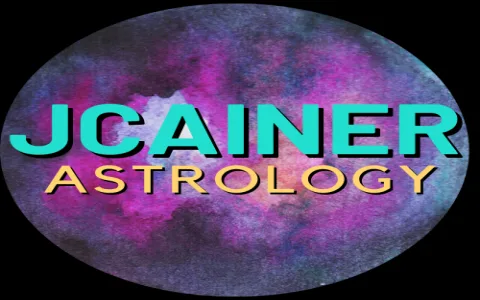The Chaos Before the Calendar: Why I Decided to Test the Virgo Weekly Voodoo
Man, I hit a wall last month. A serious wall. I was pulling 12-hour days but getting maybe three hours of actual useful output. My usual system—just powering through until I collapsed—was failing me. I felt scattered, like trying to herd cats in a wind tunnel. I needed an edge, something outside the typical productivity hacks. I needed a system that forced me to prioritize, not just react.
I’m a Virgo, classic type: obsessed with detail, organized until the moment everything collapses, and secretly, deeply cynical about anything that smells like woo-woo. But hey, desperation calls for strange measures. If I could schedule my high-difficulty tasks on days the universe supposedly backed me up, maybe that psychological boost alone would make the difference. I decided to take the weekly horoscope, treat it like a serious weather forecast for my emotional energy, and truly road test it. I was going to turn soft prediction into hard data.
Phase One: Harvesting the Predictions
My first move was obvious: I needed data. Just grabbing one horoscope felt cheap. It’s like relying on a single weather app—you know it’s going to be wrong. So, I harvested three weekly forecasts specifically for Virgo. I used a couple of high-traffic astrology sites and one old-school print column I found online. My goal was synthesis.
I didn’t care about generic fluff like “a new journey is beginning.” I only logged the explicit actionable forecasts related to specific days and activities:
- Money/Finance (M)
- Communication/Networking (C)
- Deep Work/Focus (D)
- Rest/Recharge (R)
I sat there for an hour, cross-referencing. Monday was universally flagged as “good for setting intentions” but “low energy.” Tuesday was a consensus winner for “Communication breakthroughs.” Wednesday was a mixed bag, “handle details with care.” Friday? Every single source screamed “Financial stability and planning.” That Friday was my target for the hardest money tasks, no question.
Phase Two: Deploying the Pain Points
This wasn’t about testing if I’d find a dollar on the street; it was about moving my toughest work blocks. I needed three absolutely brutal tasks that had been sitting on my plate, demanding intense focus and perfect timing. I slotted these tasks ruthlessly based on the synthesized forecast.
Task 1: The Client Pitch Revision. This was a 40-page deck that needed to be boiled down to a 10-minute presentation. Requires charisma, sharp editing, and persuasive communication. This was slated for Tuesday (C), my communication powerhouse day.
Task 2: Quarterly Tax Prep and Reconciliation. The definition of Virgo hell. Mismatched receipts, complicated spreadsheet formulas, and the desperate need for meticulous accuracy. This demanded peak financial focus. This went to Friday (M).
Task 3: Fixing the Legacy Code Nightmare. An old piece of software that kept generating random errors. Requires hours of uninterrupted, deep, frustrating debugging. This was slated for Thursday (D), a day noted for “sustaining focus.”
I physically blocked my calendar. I didn’t just note it; I protected those time slots like a hawk protecting its nest. I even told my wife, “Look, Tuesday is a communication day, don’t interrupt me while I’m on the phone with the client.” The psychological framing was crucial.
Phase Three: The Real-Time Recording and the Unexpected Results
I didn’t just track if I finished the task; I tracked the friction. My metrics were simple: Time to Completion (TTC), Subjective Energy Rating (1-10), and Measurable Outcome (Success/Failure, e.g., Did the client approve the pitch?).
Tuesday arrived. The “Communication Day.” I walked into that call feeling strangely light, even confident. I finished the pitch revision in half the expected time, and the client loved the concise presentation. Energy rating: 8.5. Success. Did the horoscope cause it? Probably not, but the belief that I was scheduled optimally definitely killed my pre-call anxiety.
Thursday arrived. The “Deep Work Day.” This was the code fix. It was a disaster. I hit error after error. My subjective energy tanked to a 3. I felt resistant and slow. I had to abandon the task halfway through. The horoscope promised focus, but my brain decided it wanted to stare at the wall. This was a clear miss.
Friday arrived. The “Financial Stability Day.” I expected tedious pain. Instead, I crushed the quarterly reconciliation. I found a couple of errors that had been hidden for weeks and corrected them cleanly. I felt methodical and calm. TTC was excellent, and the accuracy was flawless. Energy rating: 9. Success.
The Takeaway: Picking Your Best Time Wisely
So, which day was strongest? For me, Friday was the undisputed champion, aligning perfectly with the forecasts. Tuesday was a strong second. Thursday, however, proved that even the universe can’t make you debug ancient code when your brain needs a break.
What I realized is that this exercise wasn’t about magic; it was about intentionality. I didn’t schedule these tasks because I thought the planets were moving money toward me. I scheduled them because I had synthesized a report that told me where to concentrate my limited focus. By pre-committing the hardest work to these specific, astrologically designated slots, I was psychologically primed to succeed.
The system forced me to look at my week ahead of time, define what “strong” meant for me (high efficiency, low friction), and commit fully to that time block. The Virgo weekly forecast didn’t guarantee success, but it sure as heck helped me structure my effort. Now I know that if I have financial drudgery, I am waiting until that astrologically approved Friday. Why fight the current if the prediction gets you focused?





